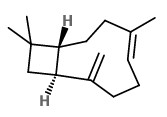Ocimum tenuiflorum L. - syn.Ocimum sanctum L. - Lamiaceae - holy basil, sacred basil, tulasi, tulsi, Indisches Basilikum, Tulsikraut
„Tulasi is cultivated for religious and medicinal purposes, and for its essential oil. It is widely known across the Indian Subcontinent as a medicinal plant and an herbal tea, commonly used in Ayurveda, and has an important role within the Vaishnavite tradition of Hinduism, in which devotees perform worship involving holy basil plants or leaves.“
http://en.wikipedia.org/wiki/Ocimum_tenuiflorum
„Analysis of the volatiles isolated from the leaves of Ocimum sanctum L., Lamiaceae, by capillary GC and GC/MS resulted in the identification of 25 components comprising 98.7% of the total oil. Eugenol (53.4%), β-caryophyllene (31.7%) and β-elemene (6.2%) were the major components found.“
[Volatile Constituents of the Leaves of Ocimum sanctum L., Raju, P. M., Ali, M., Velasco-Negueruela, A., & Pérez-Alonso, M. J., Journal of Essential Oil Research, Vol.11(2), 1999, 159-161]
„Ocimum tenuiflorum L.f. (syn O. sanctum L.) (Labiatae) is an ayurvedic medicinal plant from India that was introduced in Northeastern Brazil in 1970. Oils produced by steam distillation and microwave distillation from leaves and inflorescences were analyzed by GC/MS and retention indices. The leaf oil contained eugenol (79.0–82.7%) and β-caryophyllene (7.9–9.8%) as major constituents, whereas the inflorescence oil was rich in eugenol (17.6–60.0%), β-caryophyllene (24.5–40.7%) and caryophyllene oxide (5.9–18.5%).“
[Volatile constituents from leaves and inflorescence oil of Ocimum tenuiflorum L. f.(syn. O. sanctum L.) grown in Northeastern Brazil. Machado, M. I. L., de Vasconcelos Silva, M. G., Matos, F. J. A., Craveiro, A. A., Alencar, J. W., Journal of Essential Oil Research, Vol.11(3), 1999, 324-326]
„Ocimum tenuiflorum L.f. (syn. O. sanctum L.) (Lamiaceae) is an indigenous ayurvedic medicinal plant of India and is popularly known as holy basil/sacred basil. Oils obtained by hydrodistillation from leaves, stems, inflorescence and whole herb were analyzed by GC and GC/MS and retention indices. Methyl eugenol was the major constituent of all the oils (72.5%, 75.3%, 83.7% and 65.2% in oils from whole herb, leaf, stem and inflorescence, respectively). β-Caryophyllene was the second most dominant constituent and the respective concentration in each oil (5.5%, 6.4%, 2.7% and 12.0%).“
[Volatile constituents in oil from different plant parts of methyl eugenol-rich Ocimum tenuiflorum Lf (syn. O. sanctum L.) grown in South India. Kothari, S. K., Bhattacharya, A. K., Ramesh, S., Garg, S. N., & Khanuja, S. P. S., Journal of Essential Oil Research, Vol.17 (6), 2005, 656-658]
„Aqueous extracts and oils of five Indian medicinal plants, traditionally used for their antimicrobial activities, were evaluated against two of the most prevalent Candida species causing candidiasis, C. albicans and C. tropicalis. Of these plant materials, three showed varying degrees of antifungal activity against both species. Tulsi (Ocimum sanctum Linn.) essential oil (TEO) was found to be the most effective, followed by Peppermint essential oil, and Aloe vera aqueous leaf extract. The product with the lowest MIC was further studied along with its lead molecules to explore the possible mechanism of action of the most active constituents. Eugenol, methyl eugenol, linalool, and 1, 8-cineole, along with TEO were then evaluated at the same. The pattern and extent of inhibition was studied using growth and WST1 cytotoxicity assays. Proton pumps are important for growth and metabolism of Candida species and so H+ extrusion studies were performed to explore the possible mechanism of the test compounds. Linalool was the most active constituent of TEO, whereas inhibition of H+ extrusion appeared to be a synergistic function of the lead molecules.“
[Antifungal activities of Ocimum sanctum essential oil and its lead molecules. Khan, A., Ahmad, A., Manzoor, N., Khan, L. A., Natural product communications, Vol.5(2), 2010, 345-349]
„The essential oil compositions of cvs. ‘Green’ and ‘Purple’ of O. sanctum were almost the same, and both cultivars were dominated by eugenol (67.4% and 72.8%), β-elemene (11.0% and 10.9%), β-caryophyllene (7.3% and 8.4%) and germacrene D (2.4% and 2.2%)“
[Comparative volatile oil composition of four Ocimum species from northern India. Rajendra C. Padalia, Ram S. Verma, Natural Product Research: Formerly Natural Product Letters
Vol.25 (6), 2011, 569-575]
The flower scent of O.sanctum trapped in South India showed caryophyllene (29%), alpha-pinene (15%), germacrene A (12.9%), camphene (5.5%), β-pinene (4.6%), limonene (4.7%), 1.8-cineole (3%), and methyl eugenol (2.5%) as main constituents. It also contained traces of 4-methyl-4-methylthio pentane-2-one, which is extremely important for the characteristic cassis note.
[Meaningful Scents around the World, Roman Kaiser, Zürich 2006, 172-173 and 246]
Tulsi shrub in full bloom, author: Adityarao (2007)
Wikimedia Commons © Public Domain

